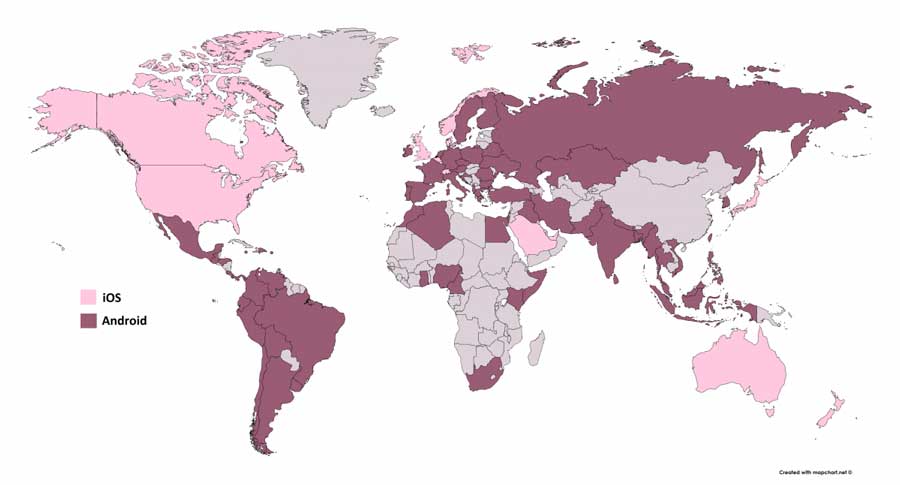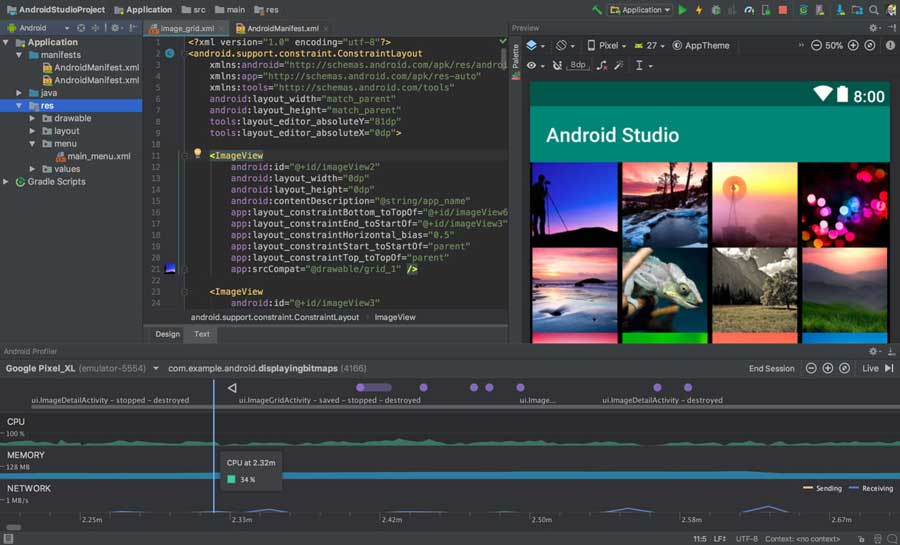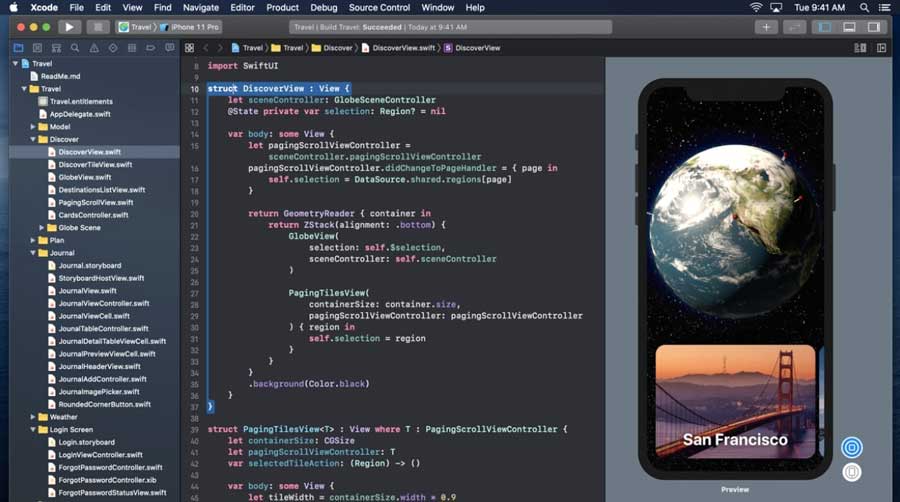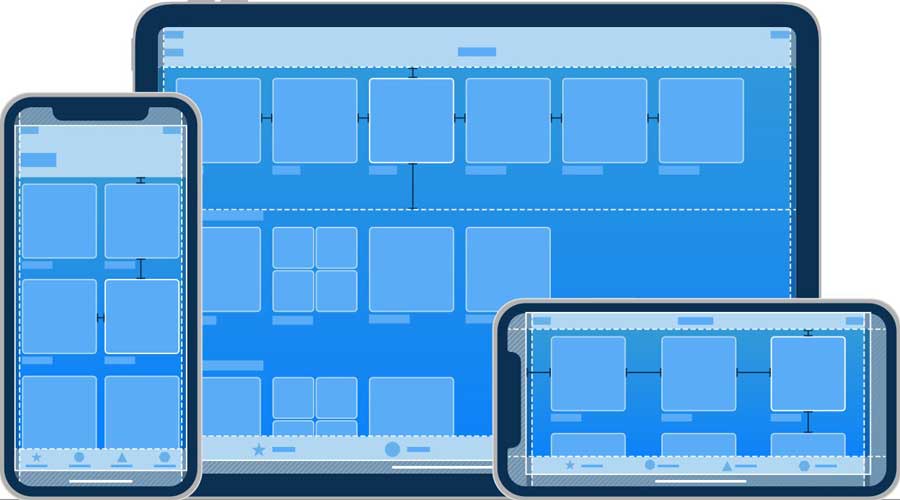Android vs iOS App Development: What Are the Main Differences?
According to Statista, there are currently around 3.5 billion smartphone users in the world. Most of them use apps on a daily basis, and the demand for mobile apps is higher than ever. Businesses need a mobile presence to reach smartphone users, and all consumers expect every platform to have a mobile app.
Mobile market overview
According to Statista, there are currently around 3.5 billion smartphone users in the world. Most of them use apps on a daily basis, and the demand for mobile apps is higher than ever. Businesses need a mobile presence to reach smartphone users, and all consumers expect every platform to have a mobile app.
According to App Annie, mobile users worldwide downloaded over 200 billion apps in 2019 and spent $120 billion on app-related purchases.
The mobile market is almost entirely divided between the two largest operating systems: Android (72.92% market share) and iOS (26.91% market share). Only 1% of the mobile market belongs to other operating systems.
Apple devices are important for mobile developers, as Apple users tend to bring more profits and are used to paying for high-quality services. Also, Apple devices are more widespread in high-income countries including the US and most European countries.
When a business decides they need a mobile app to grow their audience, find a new source of revenue, or overcome the competition, they usually choose to develop apps for both platforms simultaneously.
When it comes to developing an app for both platforms, you have two options:
- Develop a cross-platform app
- Develop a native app
Cross-platform development allows you to create one app for both iOS and Android at once, with minor tweaks to make it fit each platform. This is great for small and mid-sized apps. Cross-platform apps are faster and cheaper to develop than native apps, but there’s a risk that you won’t be able to implement everything you’d like to.
Native apps, on the other hand, are more functional and of higher quality. They give developers direct access to smartphone hardware such as cameras, microphones, and GPS. However, with native development, you’ll need two separate teams that will create two different apps. This is more costly and time-consuming.
In this article, I’ll mostly be talking about native development, as this is where the differences between Android and iOS development are most obvious. However, many of the principles I’ll discuss can be applied to cross-platform programming as well.
Let’s start by comparing the two platforms from the point of view of a business owner.
Android vs iOS: Business owner’s perspective
A business owner wants three things from an app: fast and cost-effective development, market reach, and profit. Let’s talk about Android vs iOS development differences according to these parameters.
1. Development speed
In general, iOS and Android apps take a similar amount of time to develop. However, because there are so many devices from different manufacturers that run Android, developing Android software can take engineers up to 30% longer than developing an iOS app.
On the other hand, the Java and Kotlin languages aren’t very complex, and this makes development faster. The key to speeding up Android development is deciding what models of Android devices your target audience uses and catering to those devices for your minimum viable product (MVP).
2. Development cost
Operating system fragmentation with Android makes Android development costs higher than iOS. Devices that run Android have many different screen sizes and resolutions; moreover, manufacturers often build their own platforms on top of Android, such as Xiaomi’s MIUI.
The limited number of iOS devices makes both development and testing faster, which keeps down the cost.
However, the cost of iOS and Android app development also depends on many other factors — for example, you need to consider the cost of third-party services and market publishing fees.
For example, to publish to the Play Store, you need to pay a one-time $25 fee. To do the same on the Apple App Store, you need to pay $99 annually. Again, iOS wins if you compare iOS vs Android development costs.
3. Market share
Android controls almost 73% of the mobile market, while iOS holds 27%. The Android market is extremely large and diverse, with 2.5 billion active Android devices.
Apple currently has 1.5 billion active iOS devices. The difference is significant if audience reach is your top priority. However, Android and iOS audiences are very different, and you need to consider many other factors.
4. Demographics
Android and iOS users are not equally present in all parts of the world.

iOS is more popular in the US, Canada, Australia, and a few other countries, while Android is more widely used in Asia, most of Europe, South America, and Africa.
According to data from CivicScience, iPhone users tend to have higher levels of education and higher income than Android users. Android users tend to work more in the tech and healthcare fields and are less likely to be addicted to their phones.
When it comes to gender, the distribution between iOS and Android is rather equal in the US, and the same goes for age.
5. Paying audience
Though there are more Android users in the world, iOS users remain a more attractive audience for many businesses. The reason is that iOS users are very loyal and are ready to pay for services. They’re more likely to download paid apps or subscribe to a paid service. The profit from the average iOS user is higher than the profit from the average Android user.
6. Revenue models
The way Android and iOS apps generate revenue is also different. Android applications tend to be free to download, but they’re often monetized through ads. Applications for iOS, on the other hand, are often paid, but it doesn’t hamper their download rates and revenue.
Despite the smaller audience, iOS applications typically make more money than Android apps. For example, in the last quarter of 2020, the App Store brought $21.4 billion to creators, while Google Play brought $10.4 billion in revenue.
7. Engagement
Many mobile app owners chase the number of downloads. While these two factors are important, you should pay more attention to users who actively engage with your app.
Android users are a larger audience than iOS users, but the latter demonstrate higher engagement with apps. This means you’ll need to put a bit of extra effort into your Android product to retain users.
Let’s now look at developers’ opinions on Android development or iOS development.
Android vs iOS: Developer’s perspective
What is the difference between iOS and Android development from a developer’s perspective? What is the difference between ios developer and android developer? Let’s explore.
1. Tech stack
Let’s talk about the difference between iPhone and Android technology. For Android programming, engineers use Java, Kotlin, and C++. Kotlin is a newer language that’s now considered the main language for modern Android applications. Kotlin has a lot of improvements compared to Java, and it’s a clear and intuitive language.
Apart from Java and Kotlin, Android developers use:
- Android Jetpack — out-of-the-box components
- Firebase — a mobile app development platform
- Android SDK — the official Android software development kit
- Android Studio — Google’s Android development environment

iOS developers have two languages to choose from: Objective-C and Swift. These are the tools that iOS programmers use in their work:
- iOS SDK — a software development kit that provides UI controls, graphical elements, and components
- Xcode — the official iOS development environment
- Swift Playgrounds — a development environment for Swift
- TestFlight — a service for testing iOS apps before release

2. Simplicity of development
Surely this is a bit subjective, as many things factor into how simple or hard it is to develop a product in a certain language, but programming for Android is considered to be harder.
Both Kotlin and Swift have their pros and cons, but for many developers, Swift is easier to develop in.
The fragmentation of the Android ecosystem also adds to the development time and complexity, as engineers need to consider thousands of devices from different manufacturers when they develop an Android product. So, when it comes to Android vs iOS development time, iOS is clearly the winner.
3. Testing
Testing is easier on iOS too, for two reasons. The first is that Apple has a limited number of devices, so iOS developers only have to test their apps on them. Testing how software behaves on all devices is simply impossible, which is why engineers often pick a certain number of devices for testing that are popular in a particular market.
The second reason is the testing environment. Both iOS and Android have their own testing tools, but Apple’s TestFlight is faster than Google’s emulator. However, the Android emulator is more functional and realistic.
4. Updating
Apple and Google release new versions of iOS and Android annually. This means you’ll need to update your apps for new operating system versions, and this can take up to two weeks depending on the operating system updates and your app’s size and complexity.
Users of iOS usually use the latest OS versions, as even old devices support them. Android is different in this regard: only new or flagship devices support the latest versions of this OS, so your developers will need extra effort to make sure your app runs smoothly on lots of Android versions.
5. Design philosophy
Google and Apple have different approaches to app design. Both provide guidelines that help developers create beautiful layouts and user-friendly interfaces. Google’s guidelines are called Material Design, and Apple’s guidelines are called Human Interface Design.

6. App market acceptance and deployment speed
Deployment and release to the app store is an important part of the app development process, and it takes time and specific knowledge. Your team should make sure your app meets the App Store and/or Play Store rules and regulations.
The Apple App Store takes longer to accept an application, and it’s also more demanding when it comes to rules.
However, in recent years, Google Play has also become stricter, and it now takes three days for Google to review and approve applications.
Final comparison of Android and iOS
Let’s sum up all the pros and cons of both platforms in a side-by-side comparison.
Android pros:
1. Android is an open system, meaning it’s less restricted and provides developers with lots of unique opportunities that aren’t available in iOS. Google’s OS is more flexible and customizable and allows you to create some truly unique applications.
2. Google’s Material Design guidelines are clear and extensive, and they allow developers and designers to build apps even if they don’t have much experience.
Android development will provide you with larger outreach
3. Android applications run on thousands of different devices, meaning the whole diverse audience will be able to enjoy your application.
4. Publishing on the Google Play Store is simpler and takes less time than publishing on the Apple App Store. This means that if you have tight deadlines and need to release your app as fast as possible, Android might be a better option.
Android cons:
1. Fragmentation is the main difference between Android and iOS app development. Though it can be an advantage, it can be a large drawback too. The Android ecosystem is extremely fragmented, and you need to adjust your app for lots of different screen sizes, resolutions, and Android versions created by manufacturers.
Fragmentation is the biggest drawback of Android system
2. Testing also becomes more difficult because of fragmentation, as you need to make sure your app works properly on all kinds of devices. Because testing on real devices is more reliable than testing in emulators, you’ll need to make sure your QA team has devices at their disposal.
3. Testing and the need to tweak an app for many different manufacturers and devices naturally affects the cost of Android programming, making it higher than the cost of iOS development.
Now let’s talk about developing applications for the iOS platform.
iOS pros:
1. Fragmentation in iOS is minimal, which makes it a lot easier for developers to create applications. They can tweak apps for only so many resolutions and screen sizes and don’t need to worry about how their apps will perform on thousands of devices from different manufacturers.
2. The profit per user is greater for iOS than for Android, though an iOS app will likely have fewer users. Apple device users tend to live in richer countries and are used to paying for apps and paid subscriptions. It’s easier to monetize iOS applications without sacrificing the user experience with ads.
With iOS development you can reach the most engaging and wealthy audience in the world
3. Apple’s approach to design is standardized, so developers don’t need to think much about how the UI elements should look and behave to create a smooth and beautiful app.
4. The iOS app simulator allows developers to run tests and debug their apps effortlessly. It works faster than the Android Emulator, so you’ll also save time on testing and development.
The Swift programming language is considered smoother and faster to develop in compared to Kotlin by many engineers.
iOS cons:
1. You can create iOS apps only in the Xcode IDE, which works only on Mac computers. This makes iOS development more expensive, as you need to invest in equipment before the start of development. This problem is solved, however, if you outsource your project, as an outsourcing company already has all the equipment they need.
iOS development requires larger initial investment
2. Apple is stricter when it comes to app development standards, and it rejects many apps from being published on the App Store.
3. Apple has a more standardized approach to development, so you won’t be able to customize your app as much as you can on Android.
| Key aspect | Android | iOS |
| Programming languages | Java, Kotlin | Swift |
| Development environment | Android Studio | Xcode |
| Biggest markets | Asia, Eastern Europe, South America | US, Canada, Australia, Western Europe |
| Number of active devices worldwide | 2.5 billion | 1.5 billion |
| Approach to design | Standardized | Flexible |
| Development time | Depends on the scope | Depends on the scope |
| App review process | Fast | Slow |
| Common monetization strategies | Ads and freemium model | Paid apps and subscriptions |
Android vs iOS: Which to choose?
We’ve discussed all the differences between iOS and Android, and now you want to know which platform to choose for your app. I advise you to eventually offer your app on both platforms, as it will significantly expand your potential audience. However, if you need to choose one platform first, here are some tips.
Choose Android as the first platform for your app if:
- Your target audience is in a market such as Asia, Eastern Europe, or South America that uses Android devices most
- You want to reach a larger audience
- You want to customize your app
Choose iOS development first if:
- You want a simpler development process
- Your target audience mostly uses Apple devices and is located in the US, Canada, Australia, or Western Europe
- Security and privacy are your priorities
Final thoughts
If you’re struggling to choose between developing your app first for iOS or Android, I advise you to think about your business goals. The difference in the development process is not so great, and it’s likely that eventually you’ll develop an app for both platforms.
This is why it’s easier to set priorities according to your target audience and app monetization strategy. For example, social media applications often prioritize the number of users when they’re getting started. Other applications like video streaming need engagement and an audience that’s ready to pay for a subscription.
At Mobindustry, we develop both Android and iOS applications. We have 10 years of experience creating and deploying applications to both the App Store and Google Play, so you can be sure your app won’t get rejected and that we’ll help you achieve your business goals when it’s live.
We also offer cross-platform development that allows you to create one application for both platforms simultaneously. The days when cross-platform development was considered low-quality are gone. Now there are technologies like Flutter that allow engineers to develop cross-platform apps that are very close to native apps in terms of performance.
If you need to create an application for your business, don’t hesitate to contact us. We’ll pick the best technology stack for your project and make sure it reflects what your business needs most.


